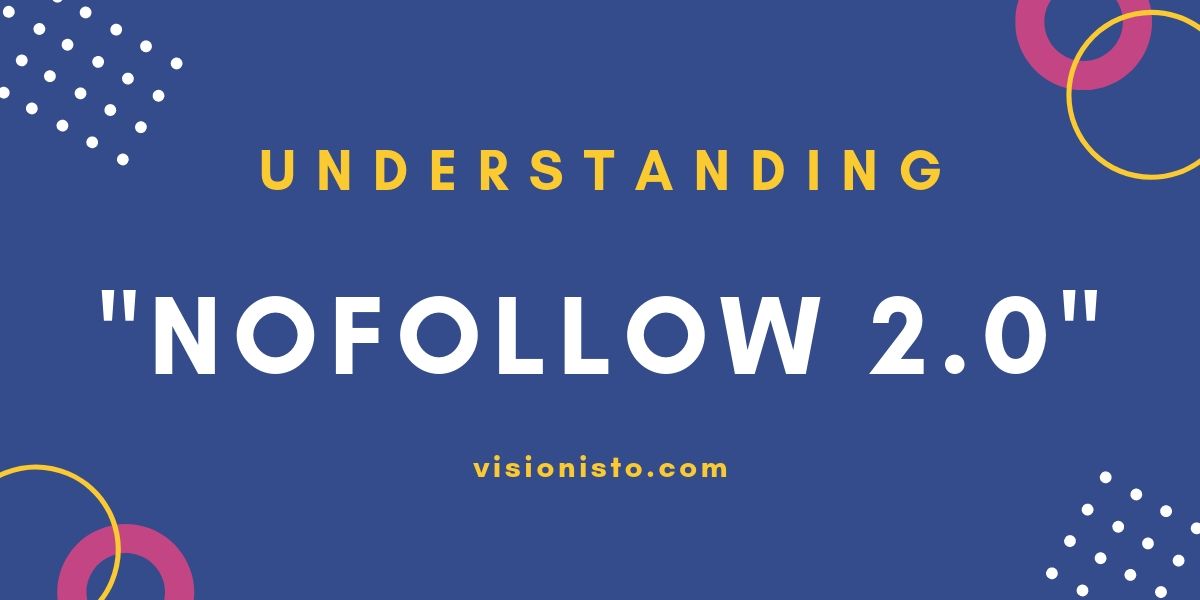Earlier this month (September 2019) Google announced new link attributes that will likely impact the way links are calculated and affect website rankings.
In this post, we cover the most basic details of backlinks, as well as nitty-gritty of “NoFollow 2.0”.
What is a NoFollow Link?
A NoFollow link is an attribute added to your link that tells Google no to follow the link, pass link juice, or give credit to the specific link. This attribute type was first introduced by Google nearly 15 years ago as a means to fight comment spam.
While having a mix of both NoFollow and DoFollow links as part of your backlink profile is completely natural, NoFollow links tend to have less of an impact on your rankings.
When first introduced, NoFollow backlinks helped identify links that are either no-so-trustworthy, or maybe advertising. In both cases, you wouldn’t want your website “voting” for these sites or passing link juice.
The most common way to NoFollow a link is to add the rel=nofollow attribute within it. This is a clear signal to Google.
So What’s “NoFollow 2.0”?
While not an official name by Google, NoFollow 2.0 was dubbed this moniker by the SEO industry to signify a new method of identifying NoFollow links and the attributes associated with them.
There are two new types of attributes released by Google, or to be rolled-out in the near future:
rel=UGC: This stands for “User Generated Content”, and means just how it sounds. The specific content was created by a user of the website and not the website’s editorial staff.
- rel=sponsored: Again, the details are in the name, but in short this is a paid or sponsored link within the content.
- rel=nofollow: This is the original NoFollow attribute and does not pass along any credit or link juice to the page or domain
Why the New NoFollow 2.0 Update?
In short, this gives Google a new way to identify links. As the online world keeps changing and growing, new methods of identifying links need to adapt too.
Let’s Get Specific
In the past, online publications would do their best to attract guest contributions from writers. The content would include DoFolow links, and eventually Googled slapped the publishers with ranking penalties.
To quickly fix the issue, the publishers changed all the DoFollow links to NoFollow, which is not necessarily the best backlink attibute.
There was no middle ground, but now there is. Publishers can now be a bit more specific about categorizing their links, which should ultimately lead to a better search resuts ecosystem.
What’s Next Following NoFollow 2.0?
Just like most Google updates, we need to wait on data before making any irrational updates to links.
In fact, Google mentions that you should not change any of your links unless you want to.
It sounds like the effort by small businesses / publishers may not be worth the reward. However, for larger publications that rely solely on traffic from SERPs it may be worth it. But we won’t really know for sure until we see the data or a direct impact to our search results.
What Should You Do?
If you are a small business or small publication, our suggestion is to take no action on previously created links. Moving forward, applying the correct attributes to your links is easy enough to do, so we suggest you make that best practice moving forward.
Conclusion
This new release from Google is likely going to benefit the user in the long run, and we all know that if you do your best to satisfy the user you’ll likely be rewarded by Google. Take advantage of Google updates and use them to your advantage. Adoption by the entire community will be slow, so those that plan and act accordingly will likely see the benefits.
For the full details on this latest update from Google, read the official update here https://webmasters.googleblog.com/2019/09/evolving-nofollow-new-ways-to-identify.html
 seolounge
seolounge


Like!! Thank you for publishing this awesome article.
Like!! Thank you for publishing this awesome article.
I am regular visitor, how are you everybody? This article posted at this web site is in fact pleasant.
I used to be able to find good info from your blog posts.